Detailed Description
Exactly the same length as the C1X, the Yamaha GC1 is available at a more affordable price due to savings in materials and production. Nevertheless, it is based on the former C1M grand. A little longer than the entry-level GB1, the GC1 also benefits from Japanese-built craftsmanship, more refined parts and duplex scaling (lacking in the GB1). This gives it a far richer and more colourful tone across its range, but particularly in the higher treble where the duplex scaling allows sections of the string which are normally ‘non-speaking’ to partially resonate in sympathy with the main note. Being a smaller baby grand, the GC1 is highly suitable for smaller spaces, and a viable alternative to an upright piano.
Colin Smithers, Sales Manager at Richard Lawson Pianos
TransAcoustic™ Piano
TransAcoustic™ pianos are genuine acoustic pianos, equipped with a volume control feature powered by Yamaha’s latest technology. While it’s also possible to play silently through headphones, the TransAcoustic™ Mode allows you to control the volume of your piano, so you can play without disturbing others. Even at low volumes, the soundboard vibrates so you can enjoy the full, physical sensation of natural acoustic sound as you play.
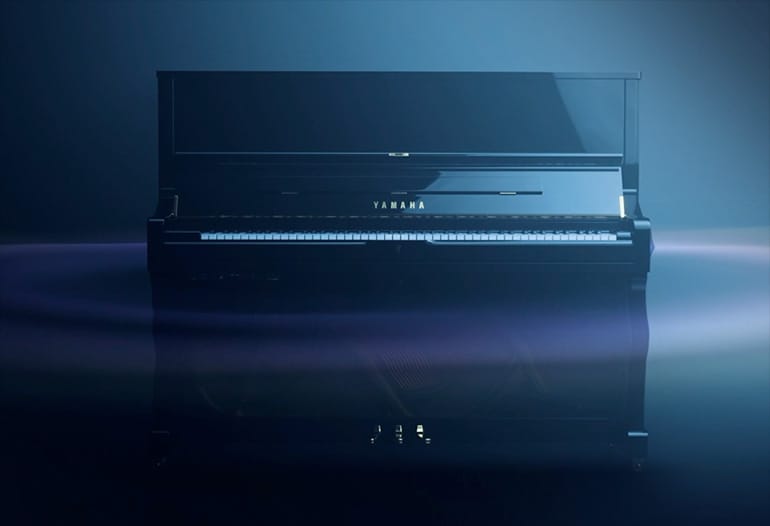
What Is The TransAcoustic™ Piano?
Inside an acoustic piano, hammers at the opposite side of the keys strike the strings, and the strings vibrate to produce sound. This initial sound is amplified by the soundboard that occupies much of the piano interior, and the entire body of the piano serves as a resonator, creating the rich and harmonically complex sound that is distinctively acoustic. Now, imagine an acoustic piano that allows you to control the volume, while still enjoying the original sound-projecting design of the piano based around the soundboard. That’s Yamaha’s revolutionary TransAcoustic™ Piano.
Simply Play Your Acoustic Piano
At its heart, the TransAcoustic™ Piano is a genuine acoustic instrument. For more than a century, Yamaha has crafted pianos that inspire players to develop and express themselves, mirroring their thoughts and feelings with rich sound and reliable quality.
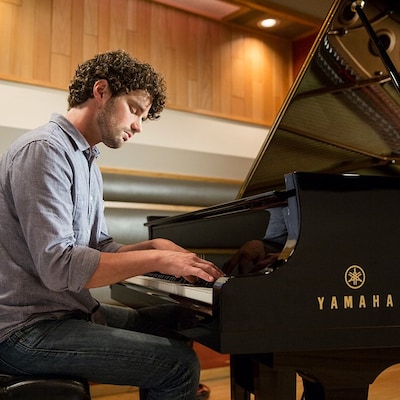
Control The Volume As You Play
TransAcoustic™ pianos make it possible to play with true acoustic sound under normal circumstances, or to turn on TransAcoustic™ Mode so that you can use the volume control to continue playing without disturbing others. In TransAcoustic™ Mode, your piano becomes a speaker, so you don’t have to wear headphones or deal with bothersome and unsightly cables. Although the sound is now being created digitally, the soundboard still vibrates and the strings and the body of the still resonate, so that you hear the music as well as feeling it through your body. With near-acoustic resonance in TransAcoustic™ Mode, you can continue to make progress in your daily practice without disturbing family members or neighbors.
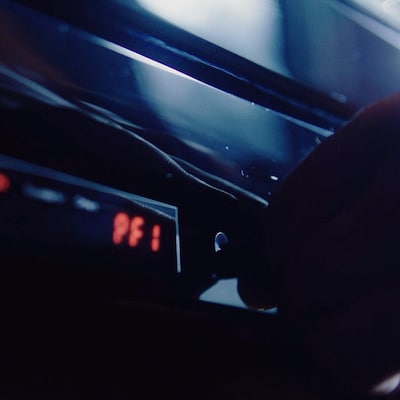
Play Silently With Headphones
TransAcoustic™ pianos are also equipped with SILENT Mode, so you can plug in headphones and enjoy realistic piano sounds at any time of the day and night, without disturbing anyone—or anyone disturbing you.
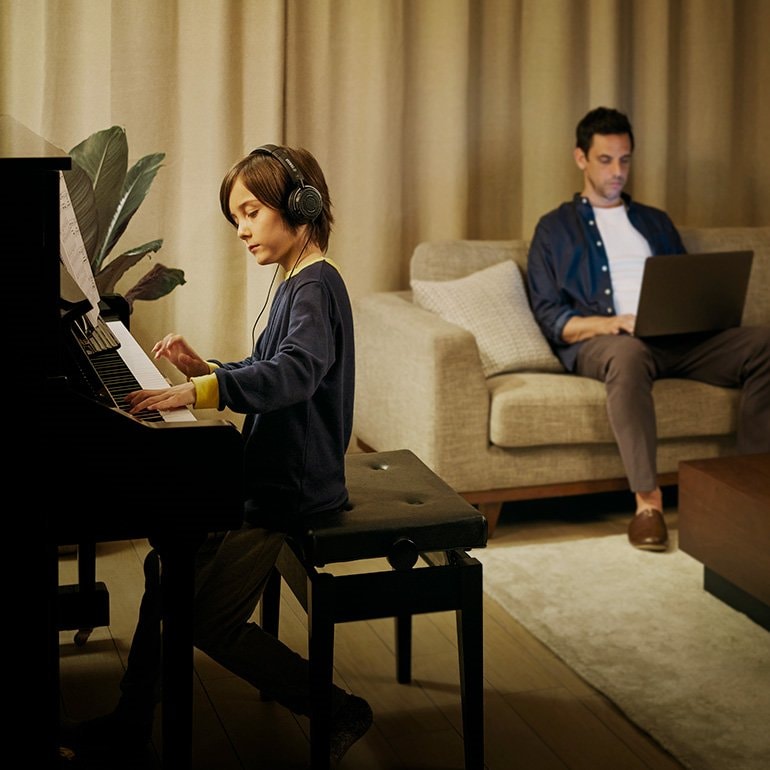
Use Your Piano As A Speaker!
You can use your TransAcoustic™ Piano as a speaker and enjoy listening to preset songs, recordings of your own performances and even music from your smartphone or other devices via Bluetooth®.* You can also play along with songs streamed from your devices, adding the piano part for ensemble performances. Both the external music and the sound of the piano pass through the soundboard and body of the piano, combining to create a rich resonance. *Unavailable in some areas.
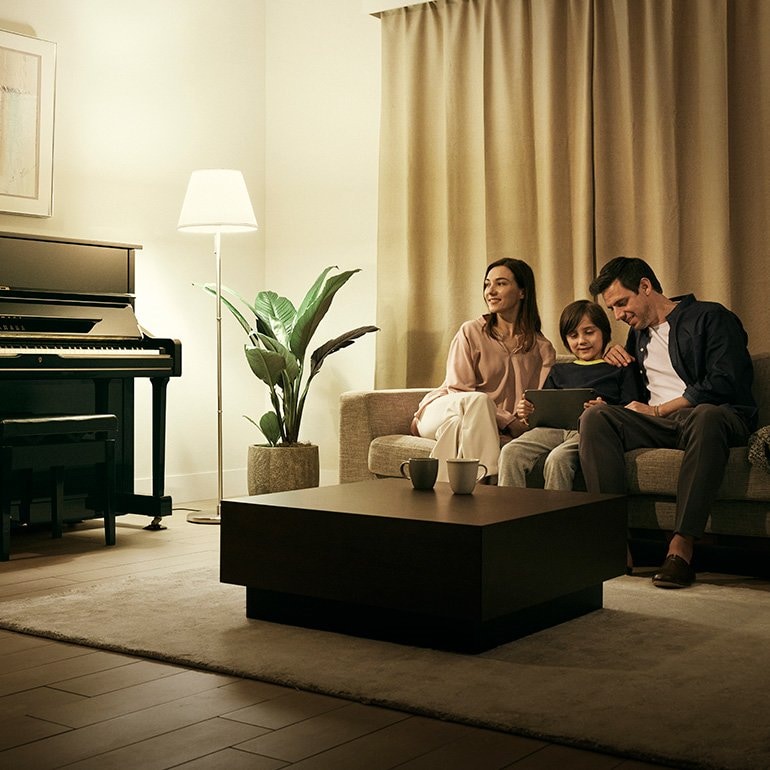
Download The Smart Pianist App
TransAcoustic™ pianos are equipped with Bluetooth® MIDI. Download the Smart Pianist app on your smart device and connect wirelessly to your TransAcoustic™ Piano to enjoy simple, intuitive control of your instrument’s features. *Unavailable in some areas.
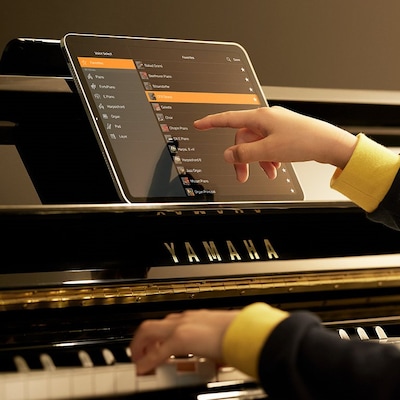
TransAcoustic™ TECHNOLOGY
Making Sounds Resonate
Pressing a key on an acoustic piano causes its hammer to strike the corresponding strings, making those strings vibrate. The initial sound is small, but it’s amplified by the soundboard with the entire body of the piano serving as a resonator. The result: the distinctively rich sound of an acoustic piano. TransAcoustic™ technology employs this same mechanism of resonance keyed by the soundboard through a digital tone generator.
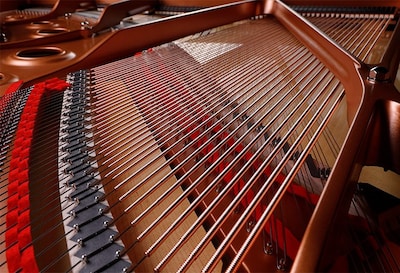
Creating Acoustic Sound From Digital Audio Sources
With TransAcoustic™ technology, there’s no need for a speaker unit, even though the sounds are generated digitally. All that’s required is a transducer. In TransAcoustic™ Mode, the hammers are stopped immediately before striking the strings, and sensors installed below the keys decipher how they are played. The transducer’s job is to convert the digital signals that represent your input into vibrations, and then relay them to the soundboard. The soundboard amplifies the vibrations, and the entire piano vibrates sympathetically. Even though the sound is digital, it goes through the same mechanism of resonance, meaning that the sound that reaches your ears is as rich as that of an acoustic piano. You can also control the volume and still enjoy the feel of playing an acoustic piano.
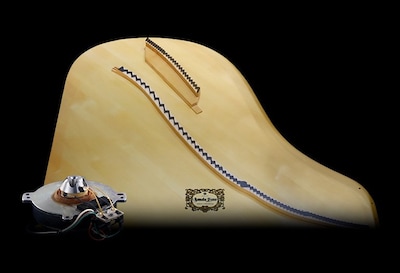
A Special Transducer For Acoustic Pianos
Conventional transducers are too heavy to install on a piano soundboard; their weight compromises its essential functions. To address this problem, Yamaha developed a transducer exclusively for acoustic pianos. Yamaha’s transducer faithfully reproduces the natural sound of acoustic pianos without inhibiting the functions of the soundboards.
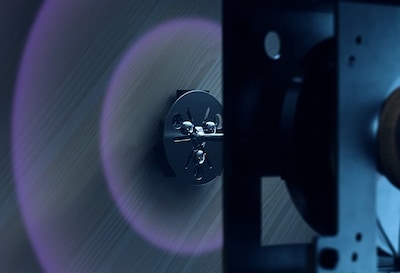
FEATURES SHARED BY TransAcoustic™ Piano AND SILENT Piano™
Articulation Sensor System
Both TransAcoustic™ and SILENT Pianos feature Yamaha’s newly developed Articulation Sensor System, which accurately interprets how actual pianos respond to the movements of pianists’ fingers, which are relayed from the keys through the action, causing the hammers to strike the strings. With Yamaha’s proprietary algorithm, the system delivers high-precision simulations of the movements of the hammers at the moment they strike the strings, reproducing every piano sound exactly the way the player intended. These sensors are non-contact, so they do not impact the feel of the piano.
Grand pianos feature sensors on the hammers for more accurately detecting and deciphering a wider range of key motion (e.g., slow keystrokes, quick trills) when the hammers actually strike the strings. Like the key sensors, the hammer sensors are non-contact, so they do not impact the touch of the piano.
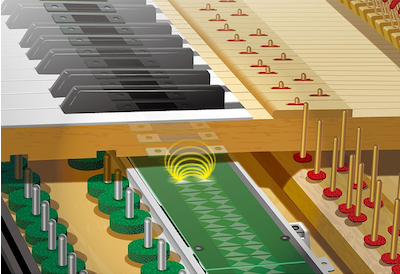
Grand Expression Modeling
Grand Expression Modelling is a new feature that faithfully reproduces the tonal variation originating from the inner workings of the piano, such as the way the hammers strike and the dampers contact the strings in response to the player’s touch. This feature detects the force and acceleration of the keystrokes and changes the audio output accordingly in real time, providing the player with the ability to explore subtle tonal nuances, even in TransAcoustic™ or SILENT mode.
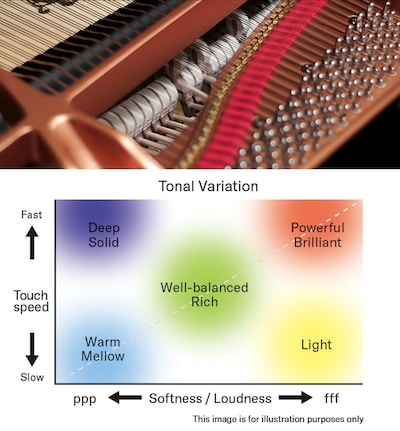
Virtual Resonance Modeling
One of the great allures of the grand piano is the sympathetic resonance created by the vibration of the entire instrument. Yamaha’s further advanced Virtual Resonance Modeling technology elaborately reproduces this rich sympathetic resonance*. This technology makes it possible to create richly varied tones by adding sympathetic tones that correspond to the timing and intensity of keystrokes and pedaling to the complex, varied sympathetic tones created when the vibrations of the strings are propagated to other strings and the soundboard. Virtual Resonance Modeling even replicates the sounds the dampers make when they are lifted off the strings, along with the resonance of the aliquot stringing, strings, soundboard, and case. Experience the deep, dynamic resonance that originates from the case of the piano.
*Only when the instrument is in Quiet Mode.
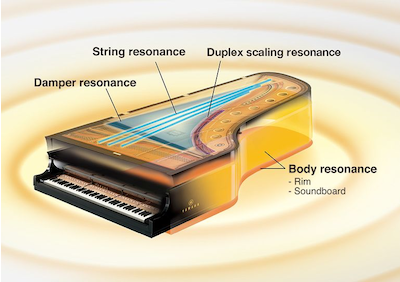
Voices Of Yamaha And Bösendorfer Grands
Introducing two newly sampled concert grand piano voices from Yamaha and Bösendorfer, both popular choices in concert halls around the world. First is the CFX, Yamaha’s flagship concert grand piano, which has earned high acclaim among the world’s most renowned pianists for its robust, resplendent, richly expressive tone. Second is the Imperial from Bösendorfer, a time-honored Viennese piano brand with a passionate following. The Imperial is known for its abundance of color and natural, warm feeling. Yamaha faithfully reproduces the unique characteristics of these concert grand pianos by carefully recording the entire tonal range of each of the 88 keys, making minute adjustments to capture the most harmonious tones each piano has to offer. These two world-renowned concert grand pianos are joined by a long list of other voices, including Classic Fortepiano*, Electric Piano, Harpsichord, and Organ.
*Featured on the TA3 and SH3
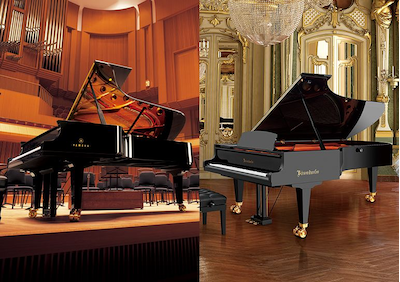
Binaural Sampling
Binaural sampling creates the ambience and full, natural resonance of acoustic pianos*, making pianists feel as though they are sitting at a grand piano. Binaural sampling is a method of sampling in which special microphones are placed on a mannequin’s head in the same positions as the pianist’s ears to capture piano sounds the way that they are experienced in reality. Sounds based on binaural sampling deliver an experience so natural that pianists forget they are wearing headphones, no matter how long they continue to play. On these pianos, binaural sampling was used for the Bösendorfer Imperial as well as the Yamaha CFX.
*Only when the instrument is in Quiet Mode.
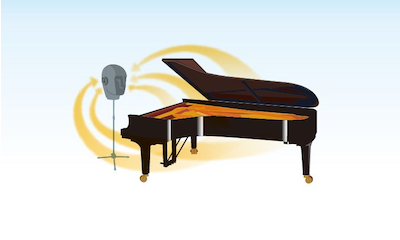
Quick Escape System
Each TA3, SH3 and SC3 grand piano model is equipped with Yamaha’s Quick Escape System to fully preserve the excellent playability and musical expressiveness demanded of grand pianos, even when playing in TransAcoustic™ or SILENT mode. When the hammers strike the strings, the system optimizes the distance between the hammers and strings to deliver the best feel, whether the piano is in acoustic mode, or one of the other modes.
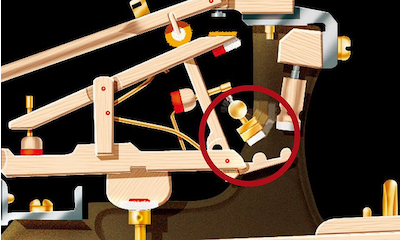
Add Pizazz To Your Playing
Equipped with 20 different rhythm types that provide automatic accompaniment with drums and bass.
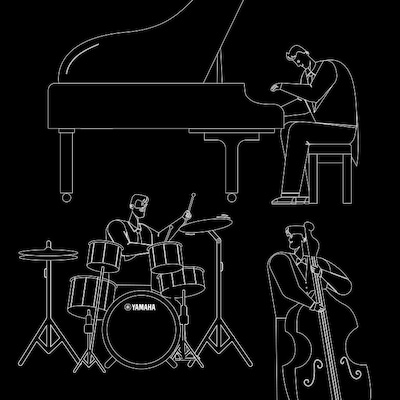
Two Recording Functions
[Built-in recording function for checking immediately after playing]
Equipped with a built-in recording function for recording at the touch of a button.
[USB flash drive recording to data for computer playback]
A function for recording to a USB flash drive. This function creates audio files that can be saved or played back on computers or burned onto CDs. Recordings are saved in WAV format.
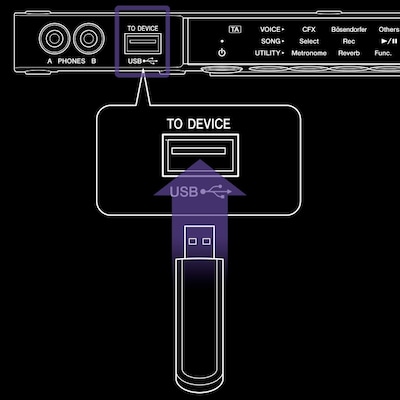
Learn The Piano With Yamaha and Flowkey
Flowkey is an exciting app for learning how to play the piano. The app offers a huge selection of interactive songs, tutorials and courses. These give you immediate feedback on your piano playing and support your progress. Combine your Yamaha acoustic piano, digital piano or Yamaha keyboard with Flowkey and you too will soon be able to play your favourite music.
The piano app is also a very intuitive way to learn for those returning to the piano after a break. Flowkey not only offers songs, tutorials and courses for beginners but also for those taking up playing again and advanced players – the app has a suitable exercise whatever your proficiency.
Register your new product and gain premium access to the app free of charge for three months!
Generous Part Exchanges Available
Get in touch with us if you have an existing digital or acoustic piano that you’d like to part exchange with us, and we’d be happy to let you know how much it could be worth.

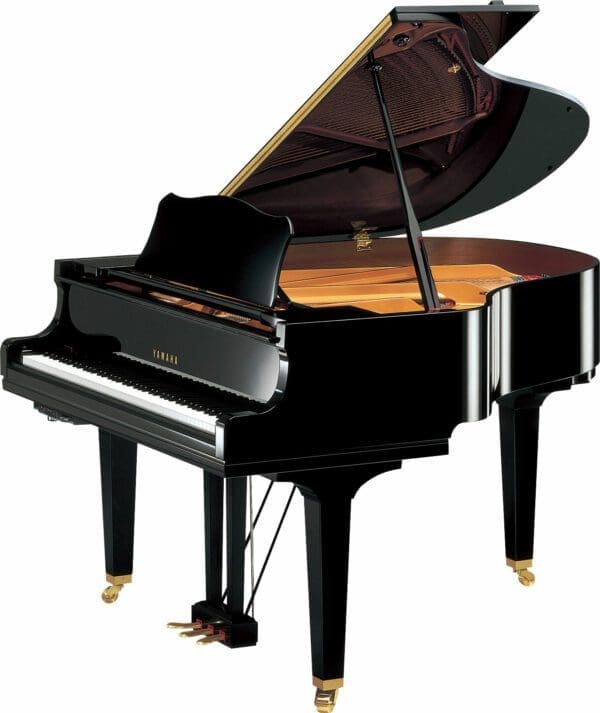

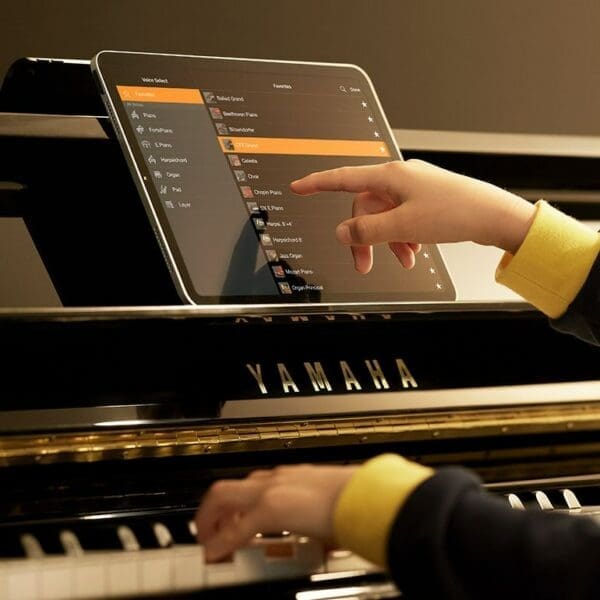
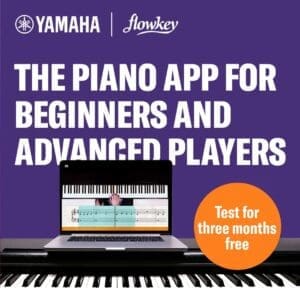

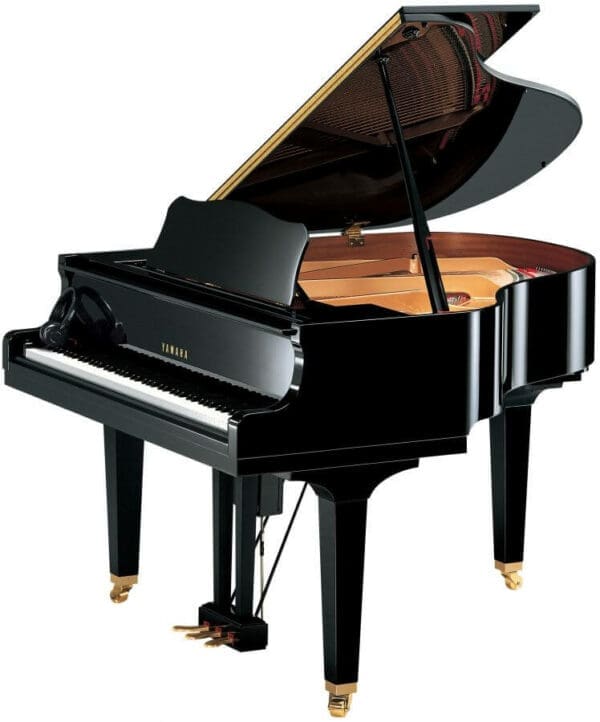
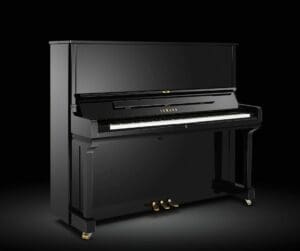
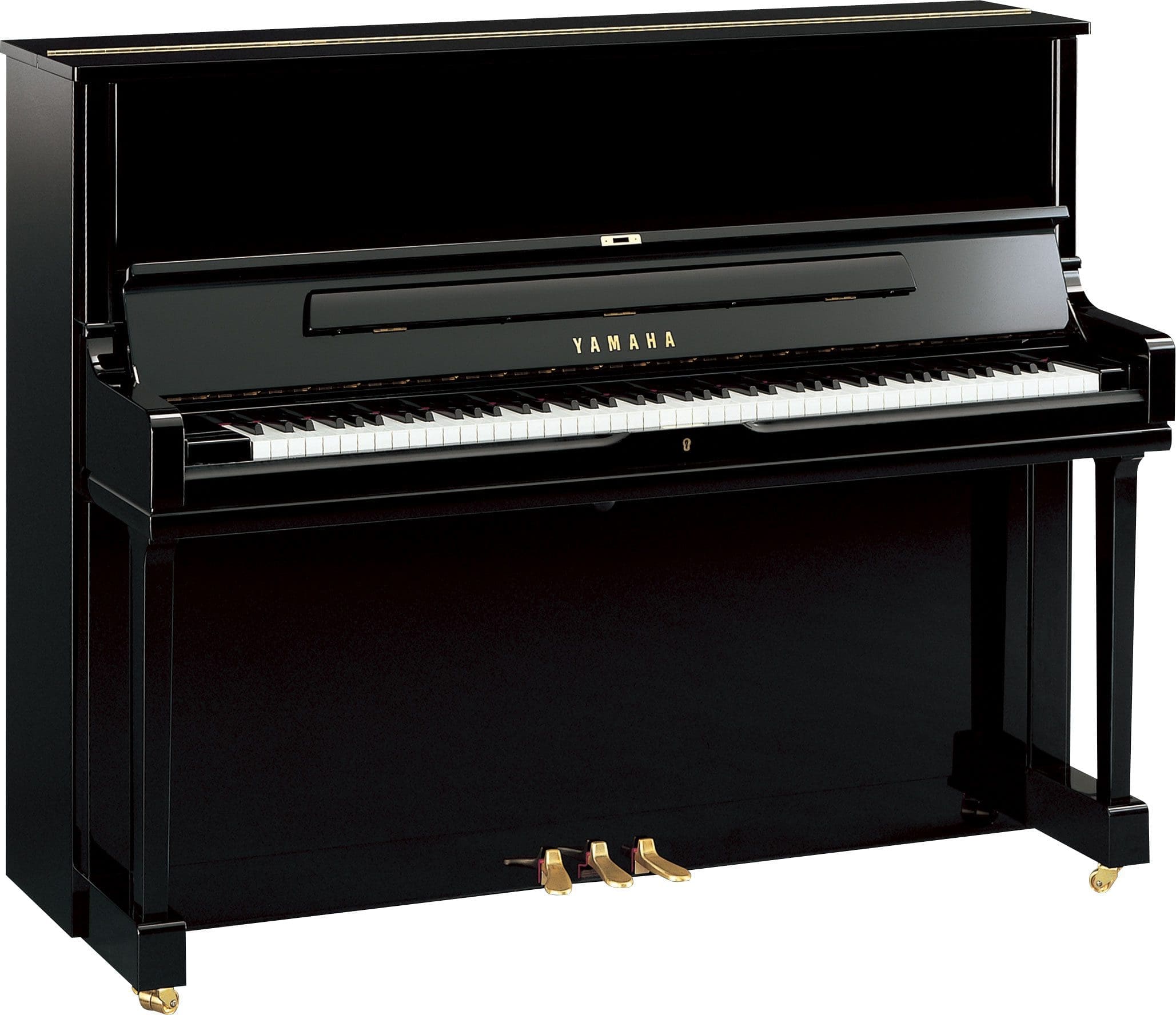
 Reviews
Reviews